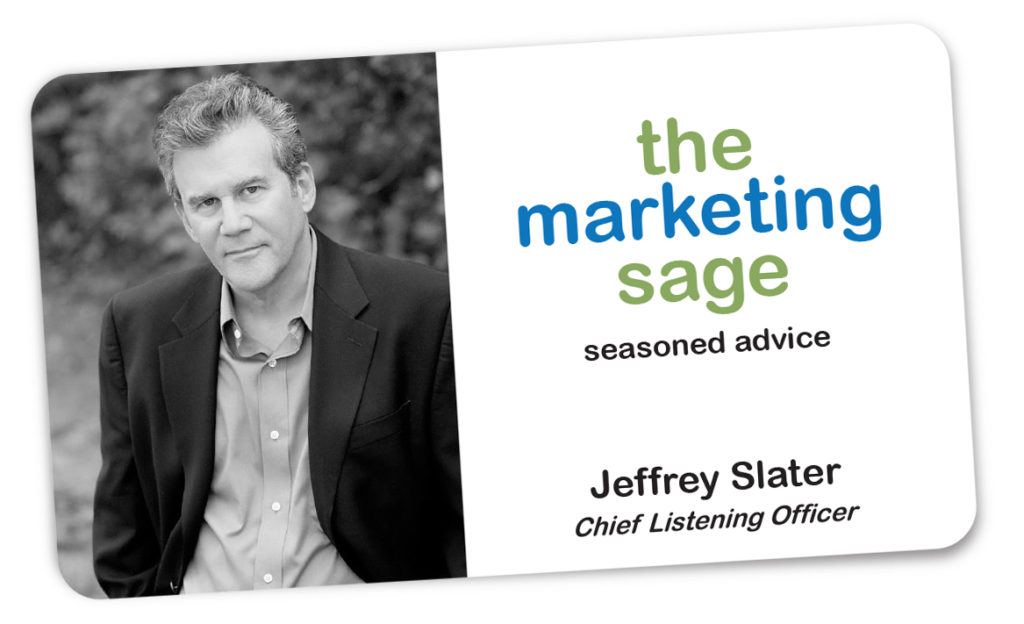The Seinfeld Car Reservation – A B2B Lesson
Did you ever see the Seinfeld episode about taking versus holding a car reservation?
You can watch it here.
Jerry becomes frustrated that a rental car agency doesn’t have the type of car he had reserved. Here’s a quick read:
- Seinfeld: I made a reservation for a mid-size car.
- Agent: I’m sorry, we have no mid-size available at this moment.
- Seinfeld: I don’t understand. I made a reservation. Do you have my reservation?
- Agent: Yes, we do. Unfortunately, we ran out of cars.
- Seinfeld: But the reservation keeps the car here. That’s why you have the reservation.
- Agent: I know why we have reservations.
- Seinfeld: I don’t think you do. If you did, I’d have a car. See, you know how to take the reservation; you don’t know how to hold the reservation. And that’s the most important part of the reservation—the holding. Anybody can take them!
Two Analogies:
How does this apply to B2B Marketing? Two critical analogies can help ensure that your organization hits its growth targets.
First, think of “taking” the auto reservation as setting your growth goals in some form of Strategic Plan and “holding” the reservation as determining how you will get there.
The “hold” fills what is often a big gap between your high-level strategy and your tactical marketing, as executed via social media, public relations, advertising, etc.
A robust strategic marketing program bridges the two ends of the spectrum. Before you start budgeting for LinkedIn ads and long before sending your salesforce into cold-calling vertigo, assess your Strategic Marketing Bridge (see below), the essential part of your growth plan.
A second parallel for the Seinfeld scene is how a company’s Strategic Narrative or Value Proposition is defined and then delivered upon.
Marketing communications is just the start. The focus here is on acquiring customers.
The actual words you use to describe why your target customers choose your products or services over competitors are certainly strategically important. Still, the promises you make are the “taking” part of the relationship.
Even more critical is demonstrating the Value Proposition, aka the “holding.”
End-to-end customer experience is another form of Strategic Marketing Bridge, an opportunity to deliver against your brand promise in every aspect of what happens after they become a customer. Consistent delivery drives customer retention. Alignment at every touchpoint helps enhance the share of the wallet.
Importantly, employees who clearly understand how culture and brand are tied together will know how their role impacts the customer.
So, calibrating your whole organization to deliver consistently is the “holding” — which is the only part of your Strategic Narrative / Value Proposition that matters if you want to actually retain the customers you’ve acquired!
Strategic Marketing Bridge Quiz
Is growth not happening at pace for any of the following reasons?
- rate of new customer acquisition has slowed
- existing customers are not adding services
- customers are leaving for reasons unclear
Would your Leadership team answer differently to the questions?
- “What is the primary reason customers choose you vs. your competitors”
- “What are the top 3 initiatives that our C-suite should be driving that cross functional boundaries?”
- “How does your strategic plan actively focus your Marketing and Sales teams’ priorities?”
Is your Marketing team mainly (or only) focused tactically on social media, creativity, public relations, and events?
Are your marketing metrics and budget…
- not directly tied to the goals in your strategic plan
- measuring activity not ROI, eg. customer acquisition vs relationship health
Are any of these true of your sales force?
- mainly pursue leads reactively or via cold-calling, versus building more proactive client development plans
- compensated based on new customer acquisition vs. customer lifetime value
Do Employees say things like…
- “We know what our customers think so we don’t want to bother them with surveys or interviews.”
- ”I’m not in marketing or sales, so I don’t really impact the customer.”
- “We are good at a lot of things, so we don’t want to narrow our options by talking about a single customer benefit.”
How many of these resonate?
- If you didn’t answer “yes” to any questions, carry on, your Strategic Marketing Bridge is solid!
- If you answered “yes” to 2-3 of these, you have gaps, but they may not be of highest priority compared to other business issues.
- If you answered “yes” to 4 or more, tackle this ASAP. You’re likely missing growth opportunities, and/or losing frustrated employees due lack of strategic prioritization.
Just like Jerry, taking the reservation is just the beginning.
A strategic marketing plan is all about holding and keeping your promise.
Author Bio: Allison Berey is a former corporate Chief Marketing Officer and management consultant, now working as a Fractional CMO with private equity and mid-market B2B companies.
She applies her broad business background in working across the C-suite, as she guides CEOs and their teams in strategic planning, strategic narrative development, and alignment between strategy and execution. She applies proprietary models proven in 20+ industries to create competitive advantage and fuel growth, and particularly loves the process of coming up to speed on a new client’s business! Connect with Allison at MCalibrate.
Photo by Roland Denes on Unsplash
You can set up a time to chat with me about your marketing challenges using my calendar. Email me jeffslater@themarketingsage.com Call me. 919 720 0995. The conversation is free, and we can explore if working together makes sense. Watch a short video about working with me.
Image courtesy of Seinfeld, no rights reserved.






